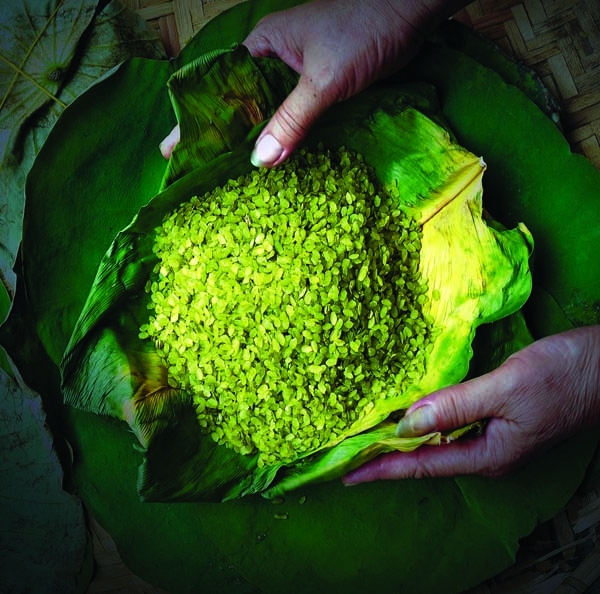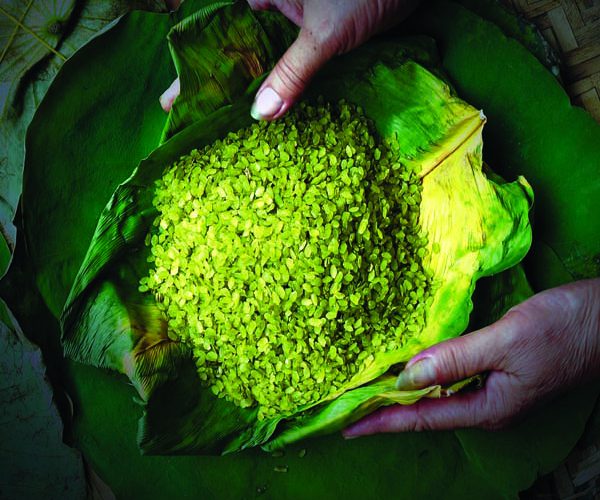(No.6, Vol.7,Dec 2017-Jan 2018 Vietnam Heritage Magazine)




Making rice flakes, Tu Le Commune, Yen Bai Province, 2016.
Photos: Nguyen Huu Thanh

From Hanoi, follow National Highway 32 for about 300 km to reach the perilous Khau Pha Pass. Bikers should have spare parts, gas and tools because the highway is quite difficult and very deserted. One can also get a ticket for VND250,000-VND300,000 from My Dinh bus terminal to Mu Cang Chai, and get off at Tu Le Commune. There are many reasonably priced guest houses and motorbike rent services at the place.
The hilly territory of Tu Le Commune, Van Chan District, Yen Bai Province, is surrounded by three famous mountaintops including KhauPha, Khau Tan and Khau Song.Tu Le lies at the foot of Khau Pha Pass which often covered in fog and clouds. Thai people call the mountain KhauPha, which means ‘Heavenly Horn’.
Tu Le is known for its impressive cascading paddies that cover hill slopes alongside National Highway 32.The terrace fields of Tu Le, La Pan Tan and De Su Phinh communes, Mu Cang Chai District, Yen Bai Province, attract waves of tourists.
The scenery of Tu Le terrace fields changes with the seasons. The fields become brightest and most alluring when rice grains grow full of milk and gradually turn yellow, usually by late September and early October.
When the milk in rice grains grows thick, Thai women of Tu Le bring out baskets to collect the thickest ears, full of plump and sappy grains from the fields. They pluck out the grains and fry them in cast iron pans to condense the insides. As a batch cools down, they bray the rice to husk it, and then they winnow it, and bray it again until all the grains are husked, green and soft.
Like rice flakes from elsewhere, Tu Le rice flakes are taken with spotted bananas, persimmon and cooked with duck meat, or sweetened porridge. But the aroma and sweetness of Tu Le rice flakes are unmistakably distinct.
Local legends have it, that a long, long time ago, God gave the Thai people’s ancestors a precious variety of rice seeds and told them to find a suitable place to plant, and it would yield exquisite sticky rice. Thai people planted it all over the northeast but never got the desirable result that was promised. When they came to the foot of Khau Pha Mountain and stopped by Muong Lung Creek to hydrate, they found the water cool and sweet, and the whole valley lush and green. The elders of the tribe decided to break the ground there to plant rice. As expected, the rice grew extremely verdant, soon blossoming with heavenly aromatic heavy ears. The ripe rice grains were thick, white and more tasty than one could imagine. The rice turns Thai boys into sturdy young men, never tired of work, who can blow pan-pipes to take away girls’ hearts. It makes Thai girls’ skin silky white, their hair shining black, their smile glowing, and their hands able to perform magic over looms, colored threads and needles, producing intricate brocades that melt men’s hearts.
Thai people of Tu Le enjoy their green rice flakes as much as their heart desires until the valley and hill slopes around turn gold under ripened rice. Gigantic golden stairs, with a few simple wooden huts of ethnic Thais here and there, and colorful silhouettes of Thai young girls harvesting the rice, that’s a beautiful vision of a happy peaceful life.

